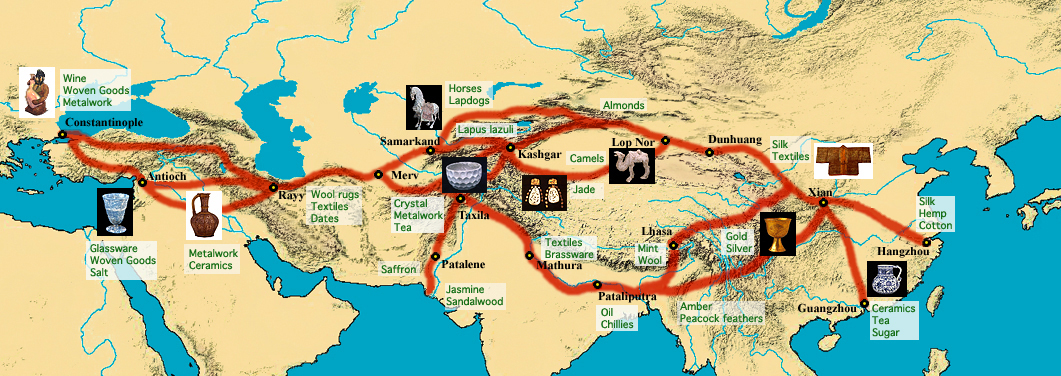WHI-Chap14-Obj7
7. Describe Muslim commerce, including banking and other techniques of business organization.
From very early on, Islamic societies relied heavily on commerce for their prosperity. Since Muhammad was a merchant, merchants were held in high esteem. Islamic commerce experienced it’s first major surge when Muslim conquerors brought many central Asian trading cities under control of the dar al-Islam. Transportation through China was made easy by the already existent roads from the revival of the silk roads network. In the drier regions and deserts, camel caravans became popular which led to the formation of caravanserais, or inns for caravan merchants and the camels. Maritime trade also increased due to the compass from China, the lateen (triangular) sails from Asia and India, and the astrolabe from the Hellenistic Mediterranean. Banks also increased the commercial economy of the Islamic world. Although banks already existed, Islamic banks of the Abbasid period created many more services than their predecessors. As well as lending money, they served as brokers in investments, exchanged currencies, and created the Sakk. Other techniques of business organization apart from banks also benefited trade. Islamic law only recognized certain forms of business organization, which provided security for entrepreneurs. Businessmen often participated in group investments. Solo investments could lead to financial ruin if a whole cargo of commodities were to be looted by pirates or lost with a sunken ship. The business ventures ranged from just investing money to actively participating in the venture. Improved transportation, banking, and techniques of business organization improved the Islamic trading economy. (Traditions and Encounters pgs,361-3)

Created by: Kendall Allen Return to WHI-Second Semester